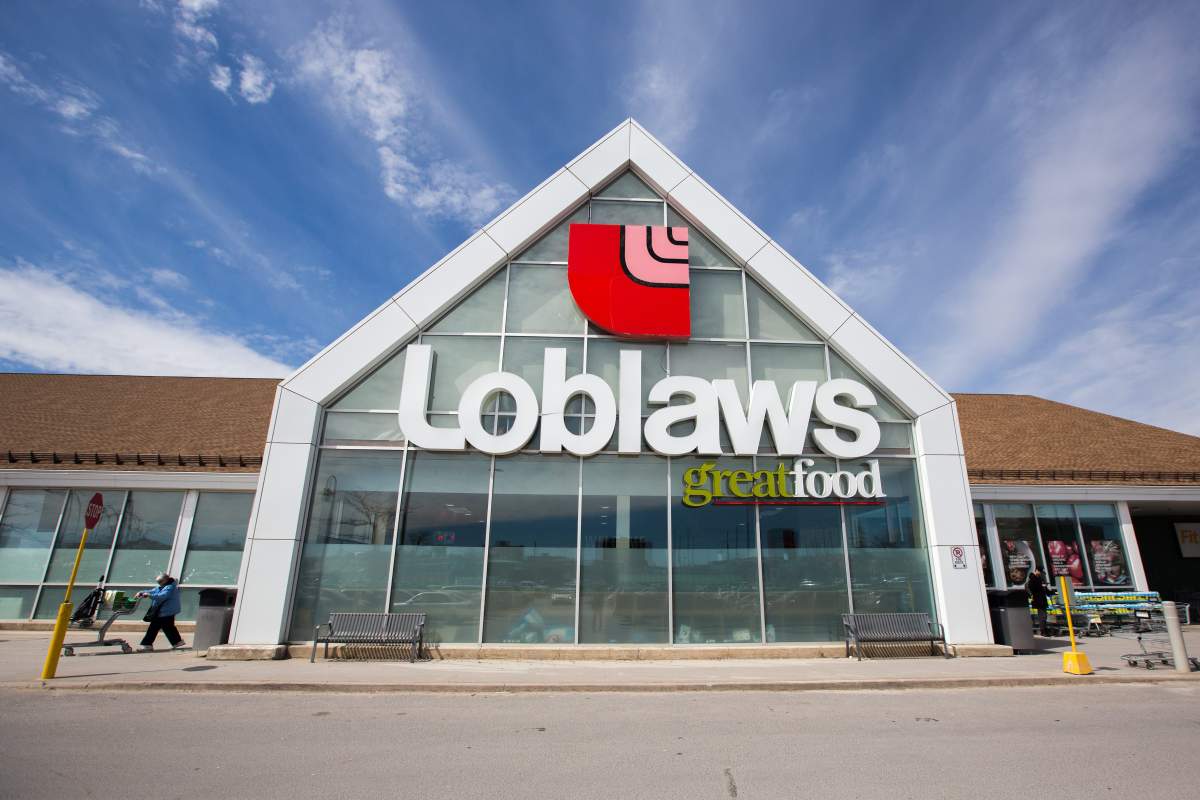Canada’s biggest grocery store chain said renewed lockdowns this spring amid the third wave of COVID-19 kept food sales strong as the pandemic’s eat-at-home trend continued.

Loblaw Companies Ltd. said Wednesday its grocery sales dipped 0.1 per cent in its latest quarter, almost reaching the pandemic surge recorded during the same period the year before.
But in a sign of how consumer behaviour is expected to shift as the country emerges from lockdowns, the company said basket sizes – the amount of groceries customers buy at one time – edged down in its second quarter while traffic in its stores picked up. During the pandemic, Canadian grocers said customers tended to shop less frequently but stock up more with each visit.
Loblaw said it’s expecting shoppers to return to its discount stores as restrictions ease, something it started to see in the three months ended June 19.
The company operates conventional grocery stores like Loblaws, Zehrs and Provigo as well as a discount division that includes No Frills and Maxi. Many consumers turned to full-service stores during the pandemic as part of a one-stop-shopping trend to reduce trips outside the home.
“Our grocery divisions performed well in the first part of the quarter, aided by COVID restrictions that kept Canadians eating at home during the spring and early summer,” Loblaw chairman and president Galen G. Weston said during a conference call with analysts. He returned to the company as president in May following the retirement of Sarah Davis.

Get weekly money news
“As communities across the country began opening up, we were particularly pleased with the re-emergence of value-seeking shopping trips, which was good for our discount formats.”
Meanwhile, the company’s drugstore division, which includes Shoppers Drug Mart and Pharmaprix, recorded a virtually non-existent cough and cold season as public health measures aimed at curbing the spread of COVID-19 also reduced the spread of other viruses.
But the uptick in outdoor adventures as many indoor activities remained off limits provided a boost to the pharmacy’s allergy medication sales.
Given the significant impact of the pandemic on the company’s grocery and pharmacy divisions, Loblaw’s outlook for the remainder of the year is difficult to predict.
“A great deal of uncertainty remains as the course of the pandemic, the reopening of the economy and the resulting impact on consumer behaviour remains dynamic,” Loblaw chief financial officer Richard Dufresne told analysts. “Sales trajectory remains difficult to forecast.”
Improving vaccination rates and easing restrictions “will change our business yet again,” Weston said.
“It is difficult to predict exactly what the magnitude of those impacts will be.”

Loblaw’s second-quarter earnings beat analysts estimates, with adjusted profits for the quarter hitting $464 million or $1.35 per diluted share, up from $260 million or 72 cents per share in the second quarter of 2020.
Revenues were $12.49 billion, compared with $11.96 billion in the prior year quarter as food same-store sales declined 0.1 per cent and Shoppers Drug Mart same-store sales increased 9.6 per cent.
Loblaw was expected to post $1.21 per share in adjusted profits on $12.16 billion of revenues, according to financial data firm Refinitiv.
The company said its net income attributable to common shareholders was $375 million or $1.09 per diluted share, up 121.9 per cent from $169 million or 47 cents per share a year earlier.







Comments